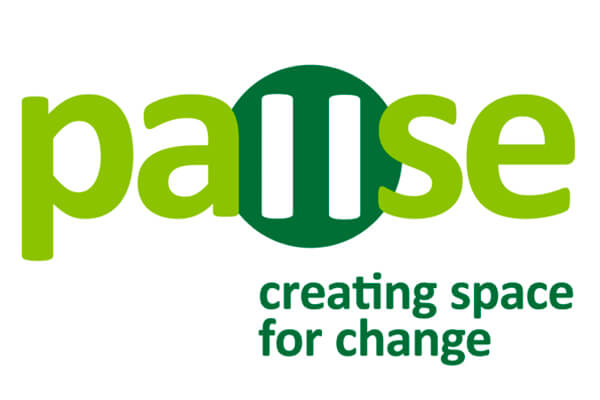Are Over‑50s Savings Accounts Still a Smart Move in 2025?
Why Over‑50s Are Re‑thinking Their Savings Strategy
The traditional approach to saving money in later life is under serious pressure. For years, banks and building societies have marketed specialised savings accounts for those aged 50 and over – promising tailored features, better access, and a sense of financial security. But in 2025, the question facing many older savers is simple: do these age‑bracketed savings products still offer real value?
With inflation gradually falling but still eating into cash-based returns, and interest rates fluctuating across the board, those nearing retirement or living on a fixed income are increasingly cautious. Many Over‑50s accounts – once seen as a solid, stable option – now pay rates that are well below both inflation and the best deals available to the general public.
Meanwhile, the financial services landscape has evolved. Challenger banks, digital-first platforms, and app-based savings tools are now offering headline-grabbing interest rates, but often at the expense of traditional branch access. For some older savers, this presents a dilemma: stick with familiar high street providers and accept lower returns, or adapt to online tools for better gains?
Even more concerning is the sheer drop in the number of Over‑50s savings deals on the market. Just a decade ago, a dozen such accounts were widely available. Today, fewer than five remain. This shift signals a broader move away from age-specific financial products and forces mature savers to ask whether loyalty to these tailored options is still financially wise.
This guide will take a deep look into what's left in the Over‑50s savings market, how these accounts compare with modern alternatives, and what financially savvy consumers aged 50 and above should be doing in 2025 to protect – and grow – their money.

How Many Over‑50s Savings Accounts Are Still Available?
The options for age-specific savings accounts have thinned dramatically. In 2015, there were at least a dozen savings accounts exclusively available to customers aged 50 or over. By 2020, that number had halved. In 2025, the market has shrunk to just four viable products – and none of them are from the UK’s major high street banks.
Instead, these remaining Over‑50s savings options come from regional building societies – institutions like Newbury, Chorley, and Earl Shilton. While these providers offer trusted, community-based financial services, their reach is limited, and the terms they offer often fall short of broader market leaders.
This sharp decline isn’t random. It reflects a wider trend: providers are moving away from targeting savings products by age. Today’s best rates are open to all, and they’re often available through online platforms or app‑only banks. For those who are comfortable navigating digital accounts, the benefits are substantial. For those who aren’t, the pool of age-friendly savings accounts continues to dry up.
What does this mean in real terms? It means that savers over 50 are now more likely to get a better return by considering general easy-access or fixed-term accounts, rather than relying on so-called senior savings deals. It also suggests that the notion of age-targeted accounts being automatically more rewarding no longer holds water in today’s competitive financial landscape.
In short, the Over‑50s savings niche is no longer a vibrant marketplace – it's become a corner of the sector that’s slowly fading out. For consumers, that makes comparison and flexibility more important than ever.

Compare the Current Over‑50s Savings Accounts (2025)
For savers seeking an account specifically designed for those aged 50 and over, the shortlist is surprisingly brief. Just four accounts are actively available in 2025 – and each comes with its own limitations and compromises. Below is a breakdown of what’s on offer and why these options may no longer represent the best value for mature savers.
Chorley Building Society – Over 60s Account (Issue 3)
This account is open exclusively to those aged 60 and above. It offers a modest annual interest rate of 2.1% and is only accessible via branch or post. While ideal for those who prefer in-person service, the rate lags far behind what’s available elsewhere – and with inflation sitting above 3%, your savings are losing value in real terms.
Earl Shilton Building Society – Heritage Savings Account
Designed for individuals aged 50 and over, this account offers two tiers: 3.5% interest per annum if you make four or fewer withdrawals per year, and just 1.0% if you exceed that. While the top rate looks competitive at first glance, the conditions make it impractical for many savers who require regular access to their funds.
Newbury Building Society – Senior Saver
This account targets those aged 55 and over and pays 3.2% interest, with payments made monthly – a helpful option for those who rely on savings for supplementary income. Like the others, this is a branch or postal account, limiting accessibility for tech-savvy consumers used to instant digital transactions.
These options all have one thing in common: they are not market-leading. While they cater to the needs of older customers who value personal service and postal access, they simply don’t offer the best returns available today. For savers aged 50 and over who are willing to look beyond age-restricted accounts, there are significantly better alternatives.

Do They Offer Better Interest Rates than Standard Accounts?
The short answer is no – not even close. Despite being marketed as tailored for mature savers, most Over‑50s savings accounts offer returns that are well below what’s available on the open market. In fact, some of the best savings rates today are offered by general easy-access accounts, with no age restrictions and far fewer limitations.
As of mid-2025, easy-access accounts from major online banks and building societies are routinely paying 4.5% or more. In contrast, age-based accounts top out at 3.5%, and that’s only if strict conditions are met – like limiting your withdrawals or sticking to postal correspondence. In real terms, this means older savers who stick to traditional Over‑50s savings products could be losing out on hundreds of pounds a year in lost interest.
It’s also worth remembering that inflation, although easing, still hovers around 3.6%. Any account offering returns below that threshold is effectively diminishing the value of your capital. Unfortunately, most current Over‑50s savings options fall into this category. Whether it’s Chorley’s 2.1% or Newbury’s 3.2%, these products simply can’t compete with more flexible, higher-paying alternatives.
For financially savvy consumers aged 50 and over, it’s no longer enough to assume that age-specific accounts will automatically deliver better outcomes. In today’s competitive banking landscape, savers must prioritise returns and flexibility over perceived exclusivity. In most cases, mainstream savings options now provide a better balance of accessibility and earning potential – even for those well beyond retirement age.

Why Do Some Savers Still Choose Them?
Despite underperforming on interest rates, Over‑50s savings accounts continue to attract a small but loyal customer base. The reason? Convenience, trust, and habit. For many older savers, particularly those uncomfortable with digital-only banking, the appeal lies not in headline rates but in the ability to manage money face-to-face, at a physical branch, or via postal services.
Institutions like Newbury and Earl Shilton Building Societies have built reputations on offering personalised, community-driven service. These are qualities that matter to a generation that values stability and human interaction – especially after decades of dealing with high street banks in person. For some, the prospect of transferring funds using a smartphone app or navigating an online dashboard simply doesn’t hold the same confidence as speaking to someone across a desk.
There’s also a perception of security and familiarity that keeps savers with age-specific accounts. Even if the returns are lower, the experience feels safer. Knowing your account is managed by a trusted regional provider with a real-world presence can offer peace of mind – particularly for retirees who may prioritise access and service over interest margins.
Then there’s the practical element. Some Over‑50s products, such as Newbury’s Senior Saver, offer monthly interest payments – ideal for those supplementing their pension income. For many older consumers, regularity of income is just as important as yield. Even if the rates are lower, the cashflow consistency can be more beneficial than a lump sum paid annually.
Ultimately, while these accounts may not be the best value on paper, they still serve a specific need: simplicity, familiarity, and a sense of control. For certain savers, especially those reluctant to engage with online-first banks, that trade-off feels acceptable.

Best Alternatives to Over‑50s Accounts in 2025
If you're aged 50 or over and want to make your money work harder, it’s time to look beyond traditional Over‑50s savings accounts. While these legacy products may offer familiarity, they rarely compete with the broader savings market on interest rates, access, or flexibility. Fortunately, several high-performing alternatives are available that don’t require an age restriction and still cater to the needs of mature savers.
1. Easy-Access Accounts with Leading Rates
Top-tier easy-access savings accounts now offer interest rates of 4.5% and above – with no upper age limits and minimal restrictions. These are available from respected building societies and digital-first banks. Options like the Coventry Building Society’s Limited Access Saver deliver a strong return while allowing up to four withdrawals annually. For Over‑50s who value both growth and control, these are a smart upgrade.
2. Notice Accounts for Higher Yields
Notice accounts are ideal if you can afford to lock your money away for 30 to 120 days. In exchange for some short-term inaccessibility, these accounts routinely offer better interest than instant access. Providers like Shawbrook, Charter Savings Bank, and Aldermore have consistently led the market here – often without requiring tech-savvy navigation.
3. Online Savings Platforms with FSCS Protection
Modern savings platforms like Raisin UK and Hargreaves Lansdown Active Savings offer Over‑50s a streamlined way to compare and switch between high-paying accounts. These marketplaces let you open and manage multiple savings products from different banks under one login, with full FSCS protection. If you’re comfortable online, this is the most efficient way to chase the best deals in real time.
4. Fixed-Term Bonds for Long-Term Stability
If you don’t need immediate access to your savings, fixed-term bonds offer excellent returns. One-year bonds are currently yielding up to 5.2%, with two-year options climbing even higher. These accounts are especially suited to retirees who want predictable income and are comfortable committing funds for a set period.
Each of these options eclipses the interest rates offered by current Over‑50s savings products. And they’re open to everyone – not just those over a certain age. The key is to stop thinking in age-based categories and start evaluating based on performance, access, and reliability.

Top Tips for Over‑50s to Maximise Savings in 2025
If you're over 50 and serious about protecting your money, you need more than a traditional savings account — you need a strategy. In a financial climate where inflation still chips away at uncompetitive returns, being passive with your savings is no longer an option. Below are expert-backed, no-nonsense tips to help you stay ahead in 2025.
1. Compare Rates Regularly — Don’t Assume Loyalty Pays
Many savers stick with their bank out of habit. But in today’s market, loyalty often results in earning less. Rate tables change frequently, and new customer deals often outperform existing saver rates. Use comparison platforms or direct bank searches every 3–6 months to ensure your money isn’t stuck earning below-market interest.
2. Don’t Be Swayed by “Over‑50s” Branding
Just because an account is marketed to the over 50s doesn’t mean it’s a good deal. Always compare it to mainstream accounts — you’ll often find higher interest, better access, and fewer conditions in standard savings products. Focus on returns and terms, not marketing labels.
3. Embrace Digital — Even If You Prefer Branches
While many mature savers prefer in-person banking, embracing even basic online tools can open the door to significantly better rates. Many top accounts today are app-based or online only. If you’re cautious, start small — perhaps with an online-only account just for your emergency fund — and build confidence from there.
4. Be Strategic with Access
If you don’t need instant access to your funds, consider locking part of your savings in notice or fixed-term accounts for better yields. Keep enough in an easy-access account for emergencies, but allow longer-term funds to work harder with structured products.
5. Reinvest Interest to Boost Long-Term Returns
While some over 50s may rely on monthly interest to supplement retirement income, those who don’t need the income immediately should consider compounding. Reinvesting interest payments instead of withdrawing them can significantly increase your savings over time — even if rates are modest.
6. Always Check for FSCS Protection
Make sure any account you use is covered by the Financial Services Compensation Scheme. This protects up to £85,000 per person, per institution — offering peace of mind if you're saving substantial amounts across multiple providers.

Use Voucher Codes to Supplement Your Savings
Maximising your cash isn’t just about where you store it — it’s also about how you spend it. For over 50s looking to protect their budget and stretch their income, discount codes can be just as powerful as a top-tier savings rate. Whether you're on a fixed income or just looking to be more financially efficient, using voucher codes is a smart and immediate way to make your money go further.
At My Favourite Voucher Codes, we work daily to find the best promotional offers across every major category — from grocery deliveries and broadband deals to home essentials and health products. And while saving 20% on your next online shop might not sound like a game-changer, those everyday wins add up fast. It's not unusual for savvy shoppers to save hundreds over the course of a year simply by applying voucher codes at checkout.
This is especially valuable for mature savers who are already focused on preserving capital. While your savings may be growing slowly in a secure account, voucher discounts deliver instant returns every time you make a purchase. It's a form of proactive saving that doesn’t require locking away your money or waiting months for interest to accrue.
Better still, your smart spending choices can do good. When you use a code on our platform, 20% of our profits go to charity — turning every saving into a wider contribution. So not only are you protecting your personal finances, you're also supporting meaningful causes across the UK.
Looking to boost your savings strategy? Combine a market-leading savings account with the power of everyday voucher codes, and you’ll start to see a difference in both your bank balance and your buying power.

Quick FAQ: Over‑50s Savings Accounts Explained
What makes a savings account an ‘Over‑50s’ product?
Over‑50s savings accounts are products restricted by age — typically only available to customers aged 50, 55, or 60 and over. While they once promised tailored features, in 2025, they rarely offer better rates than standard accounts and often come with outdated access methods like postal-only withdrawals.
Are Over‑50s savings accounts safer than standard ones?
No. All UK savings accounts from regulated banks and building societies offer the same FSCS protection — up to £85,000 per person, per provider. Age-specific branding does not increase your financial security.
Can I access Over‑50s accounts online?
Most Over‑50s accounts are still designed for in-branch or postal management. While some may offer limited online access, they are generally not as flexible or user-friendly as digital-first savings products.
Do Over‑50s accounts pay higher interest?
In most cases, no. Standard easy-access accounts and fixed-rate bonds now consistently offer better returns. Over‑50s products tend to underperform due to lower competition and fewer provider options.
Why do people still choose them?
Familiarity, personal service, and monthly interest payments remain key reasons. Some savers prioritise physical access over rate performance — especially if they prefer not to bank online.
What are better alternatives to Over‑50s accounts?
Look at easy-access accounts with 4.5%+ interest, notice accounts for mid-term saving, and fixed-rate bonds for long-term gains. Many of these outperform age-restricted products without compromising access or protection.
How often should I review my savings setup?
Every 3–6 months. Rates change frequently, and being proactive can prevent your savings from stagnating in low-performing accounts. Don’t rely on loyalty — rely on performance.
Is it worth combining savings interest with discount savings?
Absolutely. Using high-interest savings alongside voucher codes gives you the best of both worlds — your capital grows while your spending shrinks. It’s the most effective way to protect your finances on two fronts.

Final Thoughts: Are Over‑50s Savings Accounts Still Relevant?
In today’s financial climate, age-restricted savings accounts have lost much of their edge. Once promoted as exclusive tools for older savers, most Over‑50s savings products now fall short — offering lower interest, restrictive access, and limited flexibility compared to mainstream alternatives.
For those aged 50 and over, the smarter route in 2025 is to abandon assumptions. Don’t let branding convince you that age-specific equals better value. Instead, focus on performance. The best returns are coming from easy-access savings accounts, fixed-rate bonds, and digital savings platforms — all open to every age group and offering far better growth potential.
That said, there’s still a place for comfort and familiarity. If you truly value branch service or monthly interest income, some building society accounts may fit your needs. But treat them as one tool in a broader financial strategy — not your only option.
The takeaway is simple: stay alert, compare often, and don’t settle. Whether you’re building a buffer, managing retirement income, or simply looking to protect your cash, today’s savings market rewards those who adapt. Combine that strategy with smart spending — like using voucher codes to cut costs — and you’ll be in the strongest possible position to safeguard your money, whatever your age.
by Julian House 24th July 2025





